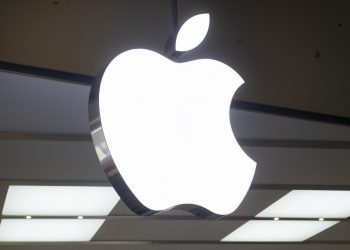Publisher: Maaal International Media Company
License: 465734
Apple’s revenue and profits beat expectations thanks to iPhone sales growth
اقرأ المزيد
Apple on Thursday reported quarterly revenue and profit that were higher than Wall Street expectations, with iPhone sales rising and wearable device sales falling less than analysts had feared.
According to Reuters, Apple said that its sales for the second quarter of the fiscal year ending April 1 fell 2.5 percent to $94.84 billion, exceeding analysts’ expectations for a 4.4 percent decline to $93 billion, according to Refinitiv data. Earnings were flat at $1.52 per share, compared to estimates for a 5.7 percent drop to $1.43 per share, according to Refinitiv data.
Apple shares rose 2 percent in after-hours trading
Apple CEO Tim Cook told Reuters in an interview Thursday that the company set a record in the fiscal second quarter of the year for iPhone sales, thanks in part to the selection of new users in markets such as India, where it is headed. Cook recently opened the company’s first number of retail stores
“We have been pleased with our performance in emerging markets,” Cook said. We achieved record numbers for the well-established iPhone base in every geographic sector, and our sales were very strong in emerging markets, especially in Brazil, India and Mexico.”
He added that the crises in the supply chains have disappeared
He added, “We did not have a shortage of materials at all during the quarter in any of the products.”
But not all of Apple’s business was immune from the electronics slump, as Mac sales plummeted while iPad revenue declined. Sales in China also fell 2.9 percent to $17.8 billion, a drop slightly larger than total revenue.
In the past few weeks, Apple has announced new services such as a high-yield savings account, but investors are still waiting to see the company’s next flagship product. Bloomberg reported that Apple may unveil a mixed reality headset as soon as, perhaps next month, when it holds its annual software developer conference.
iPhone sales rose 1.5 percent to $51.33 billion, compared to analyst expectations for a 3.3 percent decline to $48.9 billion, according to Refinitiv.
Mac sales fell more than 30 percent to $7.17 billion, compared to analyst estimates, down 25 percent to $7.8 billion, Refinitiv said.
Sales of Apple’s wearable devices, which include AirPods and Apple Watch, fell less than 1 percent to $8.76 billion, compared to expectations for a 4.4 percent decline to $8.4 billion.
Apple’s biggest growth sector was the services sector, which includes products such as iCloud and Apple Pay, as it grew 5.5 percent to $20.9 billion, in line with analyst expectations.








